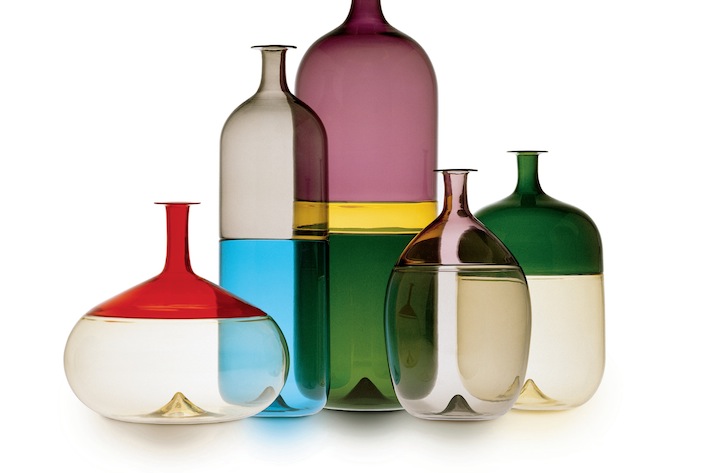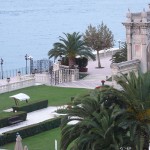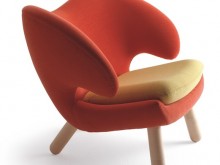One of the most extraordinary design museums we ever witnessed belonged to an octogenarian who had spent the final sixty years of his life in a floor-through apartment in Manhattan’s renowned River House.
If you live long enough, you accrue enough possessions to mark the changes in design, decade by decade. Our homes become repositories of each decade’s design trends, so that by the time we’re eighty, we’re living in a design museum, with bits and pieces from the continuum of design history.
Published by H.F. Ullmann, “Modern Living Accessories: 100 Years of Design” presents a retrospective of the most important developments and highlights in design of the past 100 years, beginning with the latest trends for 2011.
Arranged in reverse chronology, the book’s table of contents starts with 2011 and moves backwards in time to the year 1900. Each decade in the table of contents is marked by a particular design achievement, such as Philippe Starck’s juice sculpture in the Nineties, the lava lamp for the Sixties, and the television for the Fifties. George Nelson’s Wallclocks are icons of the Forties, while Alvar Aalto’s Savoy Vase marks the Thirties.
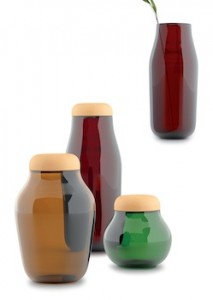
The design tome opens with an homage to Hector Serrano’s “Natura Jars” (2011), a recycled glass collection in brilliant jewel tones that utilizes cork and glass to evoke wine bottles. (Source: hf ULLMANN)
Throughout the 512-page book, concise texts complement the photographs of the various design accessories. Incisive essays by respected design historians chart the history and evolution of the global design industry.
The design tome opens with an homage to Hector Serrano’s “Natura Jars” (2011), a recycled glass collection in brilliant jewel tones that utilizes cork and glass to evoke wine bottles, while also nodding to the sustainability of today’s best designs.
A light sculpture by Ronan & Erwan Bouroullec called “Lighthouse” (2010) evokes the craftsmanship of Murano glass blowers, marrying artisan tradition to modern manufacturing technology.
Jaime Hayon’s “Crystal Candy” series (2009) for Baccarat, the venerable French luxury crystal maker, are objets d’art with narratives associated with their anthropomorphic shapes, which is in keeping with Hayon’s habit of wearing a pink bunny suit at the commencement of his career.
With its Pee Wee’s Playhouse color palette, Marc Newsom’s “Dish Doctor” (1998) looks more fanciful than practical – and yet, the dish stand is remarkably functional, thanks to flexible matchstick fingers that hold the dishes while allowing them to drip water into the basin.
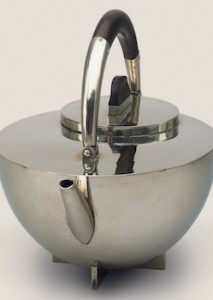
The 1924 silver-and-ebony teapot of Marianne Brandt, the German designer, sculptor, photographer, and art teacher who was the most illustrious female associated with the male-dominated Bauhaus (Source: hf ULLMANN)
Few design accessories have been more scrutinized and debated than Philippe Starck’s “Juicy Salif” for Alessi. Released in 1990, the lemon squeezer, which recalled Ridley Scott’s “Alien” mother or, at the very least, E.B. White’s Charlotte, was functional when absolutely necessary, although a decided majority of buyers purchased “Juicy Salif” for its sculptural qualities and its propensity to validate the good taste of those who placed it in a minimalist and sleekly-designed stainless steel kitchen.
Certainly one of the most recognizable masterpieces of 20th-century design is Pietro Chiesa’s vase “Cartoccio No. 2029” (1932). The undulating folds of Chiesa’s wavy paper bag vase are every bit as mesmerizing today, eighty years after its creation.
The cover photo of Alessi’s 1983 “kettle 9091” by Richard Sapper (which whistles its pitch pipes in the notes “E” and “B”) harks back to the 1924 silver-and-ebony teapot of Marianne Brandt, the German designer, sculptor, photographer, and art teacher who was the most illustrious female associated with the male-dominated Bauhaus.
Brandt’s designs for ashtrays, tea and coffee services, and other household objects were, subsequently, recognized as the best of Bauhaus design and, as the authors attest, “the harbinger of modern industrial design.” In 2007, one of Brandt’s teapots sold at auction for a record-breaking $361,000.
The editors, Martin Wellner and Andrea Mehlhose, alias Fremdkörper, are the authors of another H.F. Ullmann publication “Modern Furniture” (2009). International design consultants in the fields of interior design, exhibition design, corporate identity, and graphic design, Fremdkörper established their own design studio 1996 in Cologne.
As the book makes abundantly clear, good design is timeless and a wander through “Modern Living Accessories: 100 Years of Design” is likely to open your eyes to your own home. Invest wisely; good design holds its value.
____________________________________________________________________________
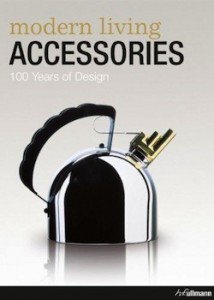
Detail of cover of “Modern Living Accessories: 100 Years of Design” (Source:hf ULLMANN)
DETAILS:
Modern Living Accessories: 100 Years of Design
Martin Wellner (Editor), Andrea Mehlhose (Editor), alias Fremdkörper
Hardcover: 512 pages
Publisher: hf ULLMANN (November 15, 2012)
Language: English, French, German
ISBN-10: 3848000415
ISBN-13: 978-3848000418
Product Dimensions: 12 x 9.4 x 1.9 inches
Price: $59.99

